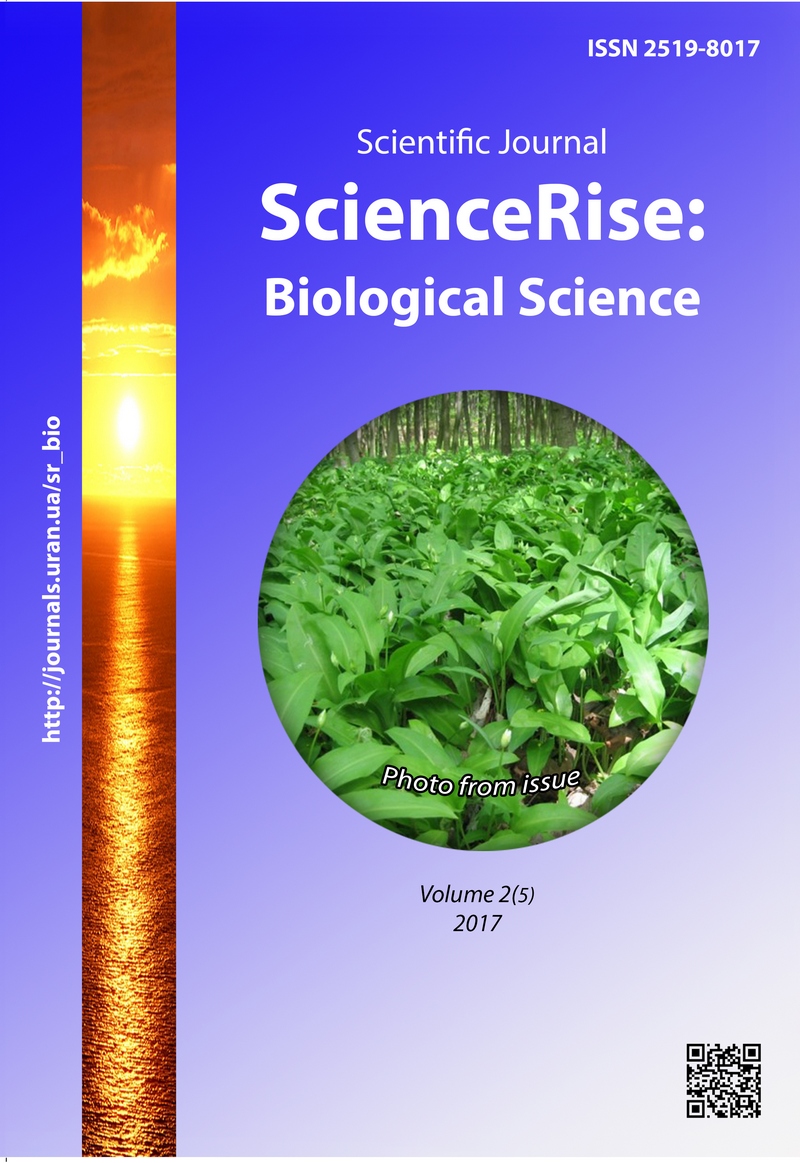Аналіз швидкості когнітивної обробки чистих тонів за умови їх бі- та моноуральної подачі у музикантів і немузикантів
DOI:
https://doi.org/10.15587/2519-8025.2017.99882Ключові слова:
когнітивні викликані потенціали, бінауральна стимуляція, моноуральна стимуляція, музиканти, немузикантиАнотація
У музикантів при бінауральній і правосторонній подачі тонів їх обробка є швидшою, ніж у немузикантів. При лівосторонній подачі тонів відмінності в швидкості їх обробки між групами не виявляються. Імовірно, це є відображенням транскалозальної затримки у музикантів, у яких інформація про тон передається з правої півкулі до лівої для аналізу
Посилання
- Ho, Y. C., Cheung, M. C., Chan, A. S. (2003). Music training improves verbal but not visual memory: Cross-sectional and longitudinal explorations in children. Neuropsychology, 17 (3), 439–450. doi: 10.1037/0894-4105.17.3.439
- Moreno, S., Marques, C., Santos, A., Santos, M., Castro, S. L., Besson, M. (2008). Musical Training Influences Linguistic Abilities in 8-Year-Old Children: More Evidence for Brain Plasticity. Cerebral Cortex, 19 (3), 712–723. doi: 10.1093/cercor/bhn120
- Gardiner, M. F., Fox, A., Knowles, F., Jeffrey, D. (1996). Learning improved by arts training. Nature, 381 (6580), 284. doi: 10.1038/381284a0
- Cheek, J. M., Smith, L. R. (1999). Music training and mathematics achievement. Adolescence, 34 (136), 759–761.
- Graziano, A. B., Peterson, M., Shaw, G. L. (1999). Enhanced learning of proportional math through music training and spatial-temporal training. Neurological Research, 21 (2), 139–152. doi: 10.1080/01616412.1999.11740910
- Patston, L. L., Hogg, S. L., Tippett, L. J. (2007). Attention in musicians is more bilateral than in non-musicians. Laterality: Asymmetries of Body, Brain and Cognition, 12 (3), 262–272. doi: 10.1080/13576500701251981
- Nering, M. E. (2002). The effect of piano and music instruction on intelligence of monozygotic twins. Dissertation Abstracts International Section A: Humanities and Social Sciences, 63 (3-A), 812.
- Schellenberg, E. G. (2004). Music Lessons Enhance IQ. Psychological Science, 15 (8), 511–514. doi: 10.1111/j.0956-7976.2004.00711.x
- George, E. M., Coch, D. (2011). Music training and working memory: An ERP study. Neuropsychologia, 49 (5), 1083–1094. doi: 10.1016/j.neuropsychologia.2011.02.001
- Lee, Y., Lu, M., Ko, H. (2007). Effects of skill training on working memory capacity. Learning and Instruction, 17 (3), 336–344. doi: 10.1016/j.learninstruc.2007.02.010
- Strait, D. L., Kraus, N., Parbery-Clark, A., Ashley, R. (2010). Musical experience shapes top-down auditory mechanisms: Evidence from masking and auditory attention performance. Hearing Research, 261 (1-2), 22–29. doi: 10.1016/j.heares.2009.12.021
- Okhrei, A., Kutsenko, T., Makarchuk, M. (2017). Performance of working memory of musicians and non-musicians in tests with letters, digits, and geometrical shapes. Biologija, 62 (4), 207–215. doi: 10.6001/biologija.v62i4.3408
- Faßhauer, C., Frese, A., Evers, S. (2015). Musical ability is associated with enhanced auditory and visual cognitive processing. BMC Neuroscience, 16 (1), 59. doi: 10.1186/s12868-015-0200-4
- Brochard, R., Dufour, A., Despres, O. (2004). Effect of musical expertise on visuospatial abilities: Evidence from reaction times and mental imagery. Brain and Cognition, 54 (2), 103–109. doi: 10.1016/s0278-2626(03)00264-1
- Patston, L. L. (2007). Balanced Brains: An investigation of visuospatial ability and lateralization in musicians. Auckland, 145.
- Okhrei, A. G., Kutsenko, T. V., Makarchuk, M. E. (2016). Vykonannya testu Strupa z vyznachennyam prostorovoyi lokalizatsiyi stymuliv muzykantamy ta nemuzikantamy [The fulfillment of Stroop test with identification of spatial localization of stimuli in musicians and non-musicians]. Vistnyk Cherkas’kogo Universytetu, 1, 82–89.
- Okhrei, A. G., Kutsenko, T. V., Makarchuk, M. E. (2016). Vplyv zanyatʹ muzykoyu na vykonannya pryamoho i zvorotnoho testiv Strupa [The influence of music training on the fulfillment of direct and reverse Stroop test]. Visnyk Kyyivsʹkoho natsionalʹnoho universytetu, 21, 14–18.
- Hnezdytskyy, V. V. (1997). Vyzvannye potentsyaly mozha v klynycheskoy praktyke [Event-related brain potentials in clinical practice]. Taganrog: TRTU, 252.
- Patel, S. H., Azzam, P. N. (2005). Characterization of N200 and P300: Selected Studies of the Event-Related Potential. International Journal of Medical Sciences, 2, 147–154. doi: 10.7150/ijms.2.147
- Polich, J. (2007). Updating P300: An integrative theory of P3a and P3b. Clinical Neurophysiology, 118 (10), 2128–2148. doi: 10.1016/j.clinph.2007.04.019
- Nikjeh, D. A., Lister, J. J., Frisch, S. A. (2008). Hearing of note: An electrophysiologic and psychoacoustic comparison of pitch discrimination between vocal and instrumental musicians. Psychophysiology, 45 (6), 994–1007. doi: 10.1111/j.1469-8986.2008.00689.x
- Trainor, L. J., Desjardins, R. N., Rockel, C. (1999). A Comparison of Contour and Interval Processing in Musicians and Nonmusicians Using Event-Related Potentials. Australian Journal of Psychology, 51 (3), 147–153. doi: 10.1080/00049539908255352
- Besson, M., Faita, F. (1995). An event-related potential (ERP) study of musical expectancy: Comparison of musicians with nonmusicians. Journal of Experimental Psychology: Human Perception and Performance, 21 (6), 1278–1296. doi: 10.1037/0096-1523.21.6.1278
- Bever, T. G., Chiarello, R. J. (1974). Cerebral Dominance in Musicians and Nonmusicians. Science, 185 (4150), 537–539. doi: 10.1126/science.185.4150.537
- Mazziotta, J. C., Phelps, M. E., Carson, R. E., Kuhl, D. E. (1982). Tomographic mapping of human cerebral metabolism: Auditory stimulation. Neurology, 32 (9), 921–937. doi: 10.1212/wnl.32.9.921
- Hantz, E. C., Crummer, G. C., Wayman, J. W., Walton, J. P., Frisina, R. D. (1992). Effects of Musical Training and Absolute Pitch on the Neural Processing of Melodic Intervals: A P3 Event-Related Potential Study. Music Perception, 10 (1), 25–42. doi: 10.2307/40285536
- Nittono, H., Nageishi, Y., Nakajima, Y., Ullsperger, P. (1999). Event-related potential correlates of individual differences in working memory capacity. Psychophysiology, 36 (6), 745–754. doi: 10.1111/1469-8986.3660745
##submission.downloads##
Опубліковано
Як цитувати
Номер
Розділ
Ліцензія
Авторське право (c) 2017 Artem Okhrei, Tetiana Kutsenko, Mykola Makarchuk

Ця робота ліцензується відповідно до Creative Commons Attribution 4.0 International License.
Наше видання використовує положення про авторські права Creative Commons CC BY для журналів відкритого доступу.
Автори, які публікуються у цьому журналі, погоджуються з наступними умовами:
1. Автори залишають за собою право на авторство своєї роботи та передають журналу право першої публікації цієї роботи на умовах ліцензії Creative Commons CC BY, котра дозволяє іншим особам вільно розповсюджувати опубліковану роботу з обов'язковим посиланням на авторів оригінальної роботи та першу публікацію роботи у цьому журналі.
2. Автори мають право укладати самостійні додаткові угоди щодо неексклюзивного розповсюдження роботи у тому вигляді, в якому вона була опублікована цим журналом (наприклад, розміщувати роботу в електронному сховищі установи або публікувати у складі монографії), за умови збереження посилання на першу публікацію роботи у цьому журналі.










